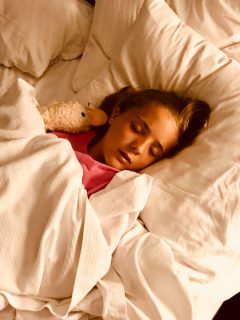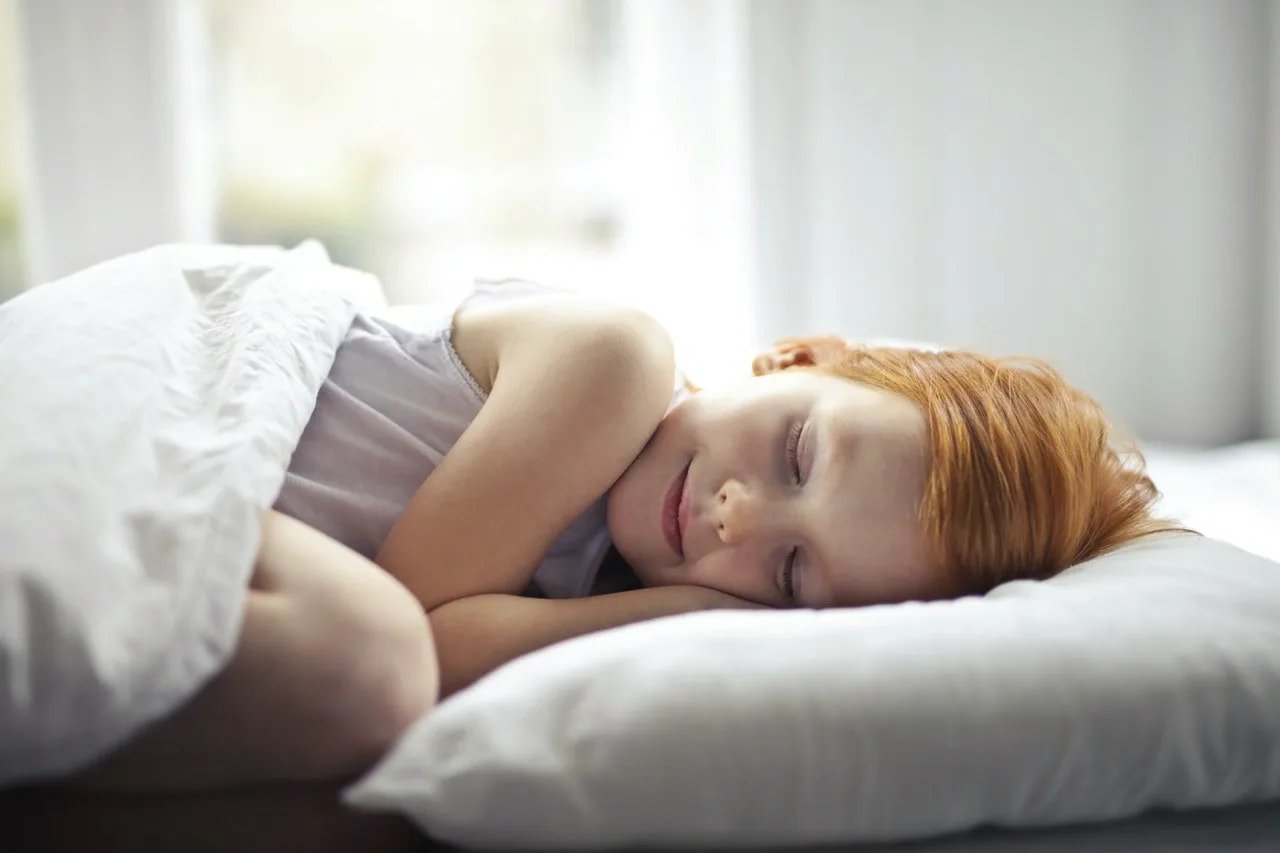Weighted blankets were originally designed as a therapy tool for children who suffer from autism and other sensory processing disorders. However, these days they have gained popularity in the mainstream market because of their several benefits for kids and adults alike.
As you might have guessed, weighted blankets weigh more than ordinary blankets. These blankets are heavy because they exert gentle pressure on the human body, which induces something called Deep Touch Pressure (DTP) therapy.
This therapy is similar to what people experience during massages or getting a tight hug, which makes them relax and feel refreshed. Sleeping under a weighted blanket also stimulates the release of serotonin and melatonin, which induces a feeling of emotional well-being.
While weighted blankets originally helped children undergoing psychotherapy, they have proved beneficial for all children. Weighted blankets help kids get better sleep, which allows them to stay focused during the day. Children using weighted blankets exhibit signs of increased attention and focus on their activities.
4 Factors For When Choosing A Child’s Weighted Blanket
1. Weight
Adults follow a standard guideline to choose weighted blankets that are about 10% of their body weight. Although the same rules apply to children, you may not find as many options in the market. Most companies make a standard kid’s weighted blanket that weighs 5lbs because it suits children of many ages.
Don’t worry, if you feel that more than 10% is your kid’s body weight because the rule does not apply to children. Most children feel comfortable under a 5lbs weighted blanket. However, if you think that your child has outgrown that weight, you can select an 8lbs throw for your kid until he or she is old enough to use an adult-sized weighted blanket.
2. Size
Even though weighted blankets for kids come in standard sizes, make sure that they are not larger than the bed that your child sleeps in. If the weighted blanket is bigger than the bed and hangs on the side, the weight of the blanket can pull out down to the floor during the night, leaving your child exposed to the cold.
3. Fillings
Weighted blankets are filled with material that makes them heavier than normal blankets. The blankets were originally filled with rice or dried beans. However, in modern days manufacturers use plastic poly pellets or glass sand to make the blanket heavy. The weighted fillings are put inside small pockets spread all over the blanket so that they do not shift to one side during the night.
While both the materials are washable, glass sand has some benefits over poly pellets. Glass sand, which is micro glass beads, takes less space and makes the blanket less bulky. Poly pellets also tend to lock in body heat, which makes them ideal for winter, but too hot for summer. On the other hand, glass sand is ideal for all kinds of weather, and it lasts longer. Unlike poly pellets, they don’t develop foul odors, which means you would have to wash the blanket less frequently.
4. Fabric
Weighted blankets are made with many types of fabrics, such as cotton, polyester, fleece, satin, bamboo fabric, and several others. Each fabric has its own set of advantages and disadvantages. While polyester is more durable than most other fabrics, it is not advisable for your child if he or she is a hot sleeper.

Photo by Sam K from Pexels
For children who tend to sweat in their sleep, we recommend a material that combines cotton and bamboo fabric. While cotton makes the blanket cool and breathable, bamboo fabric makes it last longer. The combination of cotton and bamboo fabric also makes the blanket less susceptible to mold and insects. The fabric is hypoallergenic, machine washable, and can be air-dried.
Conclusion
Kids can take some time adapting to the use of weighted blankets. While children who are used to heavy blankets may take less time, other kids can take longer to get used to the added weight on top of them at night. Let them get used to it at their own pace, or they may not enjoy the benefits. Most children start feeling comfortable under a weighted blanket in no time.
You can use different methods if you think that your child is not getting used to the weighted blanket. For example, initially, you can use it to cover your child partially. Or you can wait till your kid has fallen asleep, you can put the blanket on him or her. Weighted blankets are meant to add to the comfort during sleep. So rest assured that your child will get addicted to using it within a few days.





![women [longevity live]](https://longevitylive.com/wp-content/uploads/2020/01/photo-of-women-walking-down-the-street-1116984-100x100.jpg)









